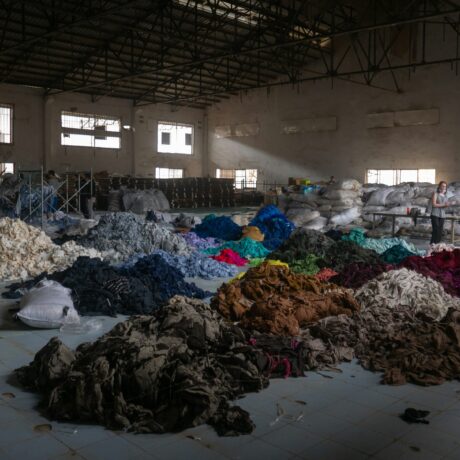Filthy fashion’s climate pollution laid bare
This is a guest blog post by Maya Rommwatt, Climate Campaigner at Stand.earth.
For an industry considered creative and cutting-edge, fashion is woefully late to the party when it comes to cleaning up its global climate pollution. Fashion contributes 5% to 8% of all global emissions — that’s more than the combined climate emissions of Canada, France, and Germany. With our planet’s livability in the crosshairs, we have entered the final decade to act on deadly climate pollution and phase out coal by 2030 if we are to restrict warming to 1.5C. Fashion brands must be at the table of changemakers.
“Sustainability” may finally be in style, but big brands have to prove it isn’t just a flash in the pan. Are their efforts enough to ensure the sector’s emissions won’t make the climate crisis worse? At Stand.earth we set out to answer this question in our latest Fossil Free Fashion Scorecard, and unfortunately, it’s not looking pretty.
View this post on Instagram
Here’s what we found:
- SETTING GREENHOUSE GAS REDUCTION TARGETS: Only 3 companies make the grade when it comes to setting targets high enough to limit global warming to 1.5℃: Asics (B), Mammut (B+), REI Co-op (B-), and Levi’s (C). Companies with the worst plans for cleaning up their climate pollution include Pentland (F), UNIQLO (F), and Under Armour (F). Since the launch of the Scorecard, the fast fashion brand Primark, which had received a failing “F” grade, announced a commitment to cut its supply chain emissions in half by 2030 – re-positioning itself as one of the frontrunners in this area.
- SWITCHING TO RENEWABLE ENERGY BY 2030: Despite the urgent need, very few companies have committed to switching from dirty fossil fuels like, like coal, to renewables in their supply chains. Allbirds, Kering, and Mammut stand out for committing to sourcing 100% renewable energy in their supply chains, but the large majority of companies graded have no plans for this critical step to reducing emissions.
- PHASING OUT COAL BY 2030: Only six companies report progress or plans to phase out deadly coal boilers, often used in the dyeing and finishing stages of manufacturing: Asics, Mammut, PUMA, Nike, Adidas, and Esprit. Unlike its peers, market-leading athleisure and wellness brand, Lululemon, has not made any commitments to eliminate coal from its supply chain.
- SYNTHETICS AND FALSE SOLUTIONS: Material choice has a huge impact on a company’s emissions, yet most companies such as the immensely popular yoga pants maker Lululemon and fast fashion giant Zara continue to rely heavily on fossil fuel-derived synthetic materials and point to false solutions–such as an overreliance on recycled materials made from other waste streams like water bottles. That means more textile waste, more single-use plastics, and more microplastic pollution! The popular outdoor brand, Icebreaker (a subsidiary of VF Corp), stands in stark contrast with its commitment to phase out all fossil fuel derived synthetics, both recycled and virgin, by 2023.
- LOW-CARBON MATERIALS: Other examples of promising leadership on low-carbon materials include Mammut which has also successfully closed the recycling loop for its climbing ropes, one of the most important and energy-intensive products in its product line. And Eileen Fisher, Kering, and Levi’s all achieve brand success with much lower inclusions of synthetics. VAUDE shows leadership with its innovation in closed-loop recycling and the elimination of unsold products.
- SHIPPING THE PRODUCT: Only 18 (38%) of the brands evaluated in the Scorecard included shipping in their supply chain emissions reduction target, even though shipping accounts for large amounts of fashion companies’ climate pollution–often more than that from their stores and offices–and is rising. Mammut is now the first retail company to commit to transitioning to zero emissions vessels, leaving all the other brands behind.
It is imperative that as fashionistas across the world, we raise our voices to demand our favourite brands get serious about their climate pollution. The path in front of companies is clear, but they may need a little shove to move in the right direction. These companies would be wise to raise their climate target ambitions and practices, which in their current form are not a look that’ll age well, if they are to remain relevant as the industry’s go-to climate leading brands.








